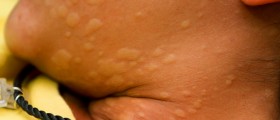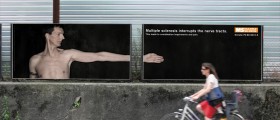
Ataxia is a condition which manifeststhrough a loss of physical coordination, stemming from an injurywhich affects the central nervous system, the brain in particular. It is a verycomplex and debilitating condition which can be caused by numerousdifferent factors.
Thus, if you desire to learn more aboutataxia, the lines below will certainly be of assistance.
Loss of Physical Coordination
Ataxia can affect any possible part ofour body, precipitating the lack of coordination. That being said, it canappear in the legs, the arms, the mouth and tongue and the eyes too.If these body parts get affected to ataxia, the symptoms may take theform of difficulties related to walking, talking, swallowing orgetting involved in any form of tasks regarding physicalcoordination and control. Bearing in mind that the vast majority ofactions we perform do require physical coordination, the effect ofthis medical condition can be quite serious.
Ataxia can appear through two majorsubtypes. First of all, it can be a condition referred to ashereditary ataxia, being a health problem which is caused by faultygenes. This form of ataxia can take a long time before it shows anysymptoms. In fact, it usually affects the sufferers gradually,escalating as the person gets older.
On the other hand, ataxia can beacute, taking place due to a trauma, a direct injury, or, perhaps,some conditions like a stroke. Therefore, this form of ataxia affectsa person instantly or over a short period of time.
As it was said above, hereditary ataxiais related to faulty genetic mutations in one's body. Since manydifferent types of these mutations may exist, there are over 70different variants of hereditary ataxia too. For example, if ataxia can only be transferred from the parents to the child whenboth parents are carriers of the faulty gene, the condition is calledautosomal recessive ataxia. However, when a single parent maytransfer the gene leading to ataxia onto his/her child, this illnessis referred to as autosomal dominant ataxia. Of course, there aremany other subtypes of both of these occurrences of ataxia.
As far as acute ataxia is concerned, itcan be caused by numerous situations and conditions. Basically, itmay evolve from cancers and brain tumors, strokes or bleeding in thebrain area, overdose from either alcohol or drugs, exposure to toxinsor even some underlying diseases such as MS, lupus or infections likerubella, meningitis or measles.
In general, ataxia mostly appears inpatients who have suffered a stroke, even though it is verycommon in patients with multiple sclerosis and brain infections.Thus, while acute ataxia is frequent, the hereditary variant is quiterare. In fact, some types of hereditary ataxia, such as theFriedrich's ataxia, affects only 2 in 50,000 people, regardless oftheir sex. Other types of ataxia are even less frequent, appearing in1 out of every 100,000 individuals.
Physical Therapy for Ataxia
As far as hereditary ataxia isconcerned, once a person is diagnosed with it, he/she is commonlysent to a specialist who develops the treatment plan.
Initially, the physical, social andpsychological needs of the patient need to be properly assessed, bothin the terms of his/her present state and in relation to theexpectations for the future.
The care team in charge of the patientduring the medical therapy for ataxia may consist of numerousexperts, including a neurologist, a cardiologist, an ophthalmologist,an urologist, a speech therapist, a social worker, a physiotherapist,an occupational therapist, a nurse specializing in neurology etc. Allthese people form a, so-called, multi-disciplinary team, increasingthe chances of one's recovery due to the wide-variety of knowledgeand expertise they provide.
While medications may be incorporatedinto the treatment, helping a person deal with the common effects ofataxia like cramps, muscle stiffness and spasms, these can triggeradverse reactions ranging from drowsiness to nausea andinconsistence.
Therefore, medications are only used asadditions to the physical treatment. The physical treatment is a partof the occupational therapy. Here, a specialized therapist teachesthe person affected with ataxia how to walk and carry out all thenecessary daily activities without problems. Depending on theseverity of the condition, the patient may need to learn how to usewalking aids like crutches. Additionally, occupational therapistssuggest possible household modifications, helping the patient getalong in his/her own dwelling with more ease.
The physiotherapy itself prevents theongoing muscle weakening that appears hand-in-hand with ataxia, alongwith the stiffening of the muscles and a state of rigidity that theymight take. In order to achieve this, the physiotherapist develops anexercise plan which the patient needs to perform on a daily basis,stretching the muscles and staying physically active. If the patientcannot perform the stretches on his/her own, the therapist mayrecommend special braces, created for these purposes.
Finally, severe cases of ataxia arebound to require the help of a wheelchair. Thus, the patient will betaught how to handle this device and move in it, during the course ofthe ataxia therapy.
This condition leads to a complete lossof physical coordination and can be either hereditary or acute,inherited form birth or caused by some other factors like injuries orunderlying illnesses. Fortunately, physical therapy and many otherforms of therapy can slow down the progression of this disease andhelp the affected individual manage his/her everyday life better.

















Your thoughts on this
Loading...